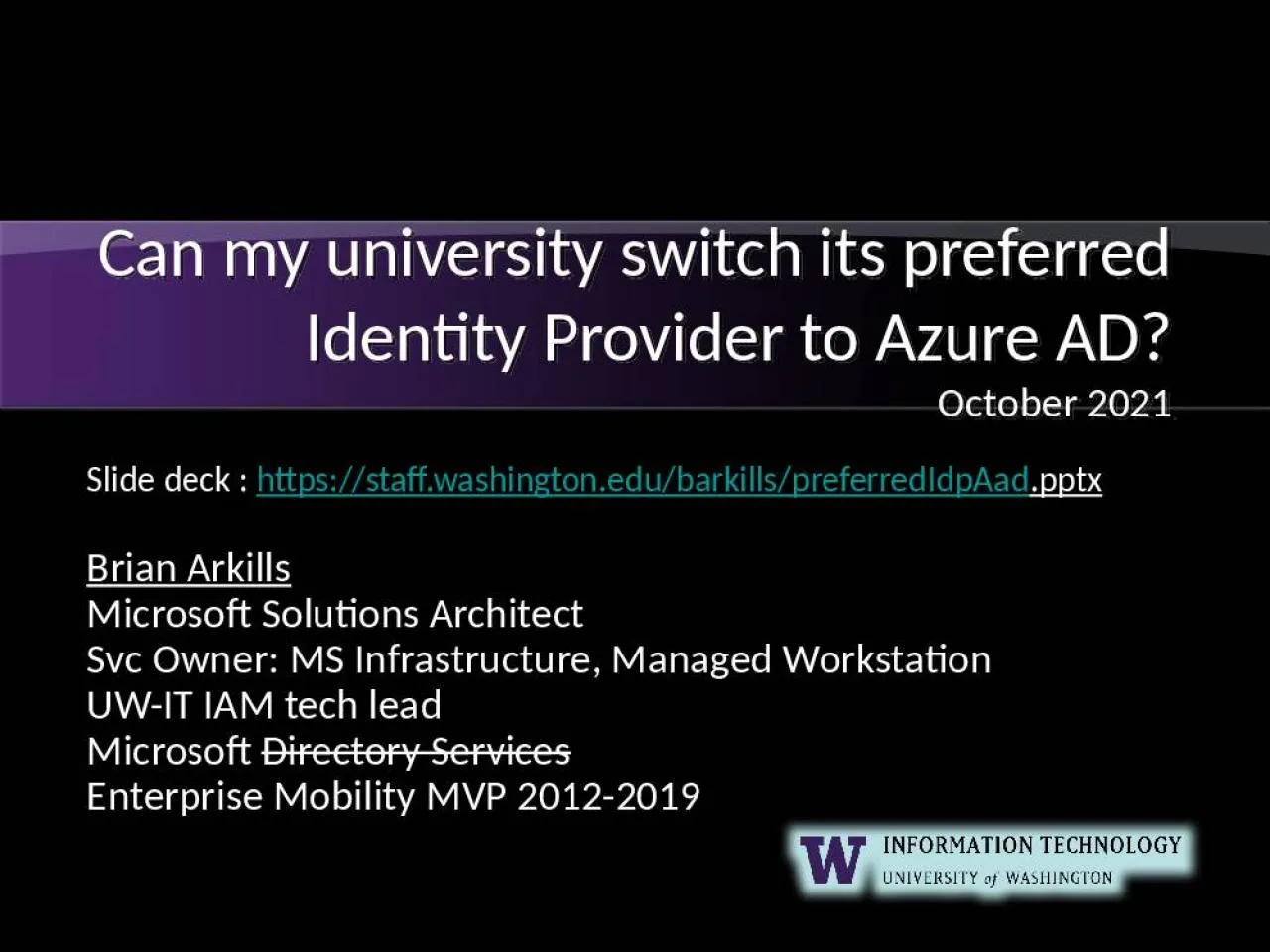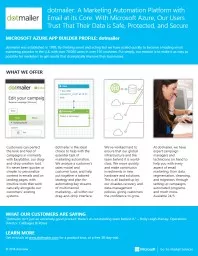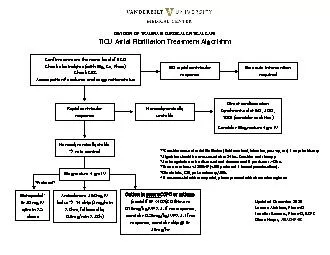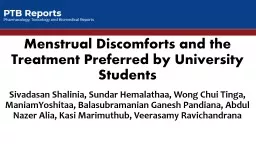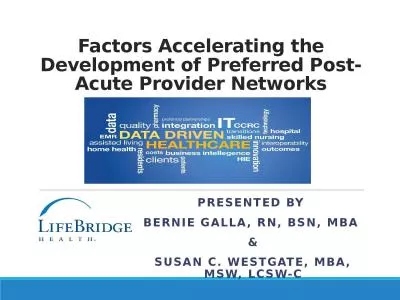PPT-Can my university switch its preferred Identity Provider to Azure AD?
Author : lily | Published Date : 2022-02-16
October 2021 Slide deck httpsstaffwashingtonedubarkillspreferredIdpAad pptx Brian Arkills Microsoft Solutions Architect Svc Owner MS Infrastructure Managed Workstation
Presentation Embed Code
Download Presentation
Download Presentation The PPT/PDF document "Can my university switch its preferred I..." is the property of its rightful owner. Permission is granted to download and print the materials on this website for personal, non-commercial use only, and to display it on your personal computer provided you do not modify the materials and that you retain all copyright notices contained in the materials. By downloading content from our website, you accept the terms of this agreement.
Can my university switch its preferred Identity Provider to Azure AD?: Transcript
Download Rules Of Document
"Can my university switch its preferred Identity Provider to Azure AD?"The content belongs to its owner. You may download and print it for personal use, without modification, and keep all copyright notices. By downloading, you agree to these terms.
Related Documents

